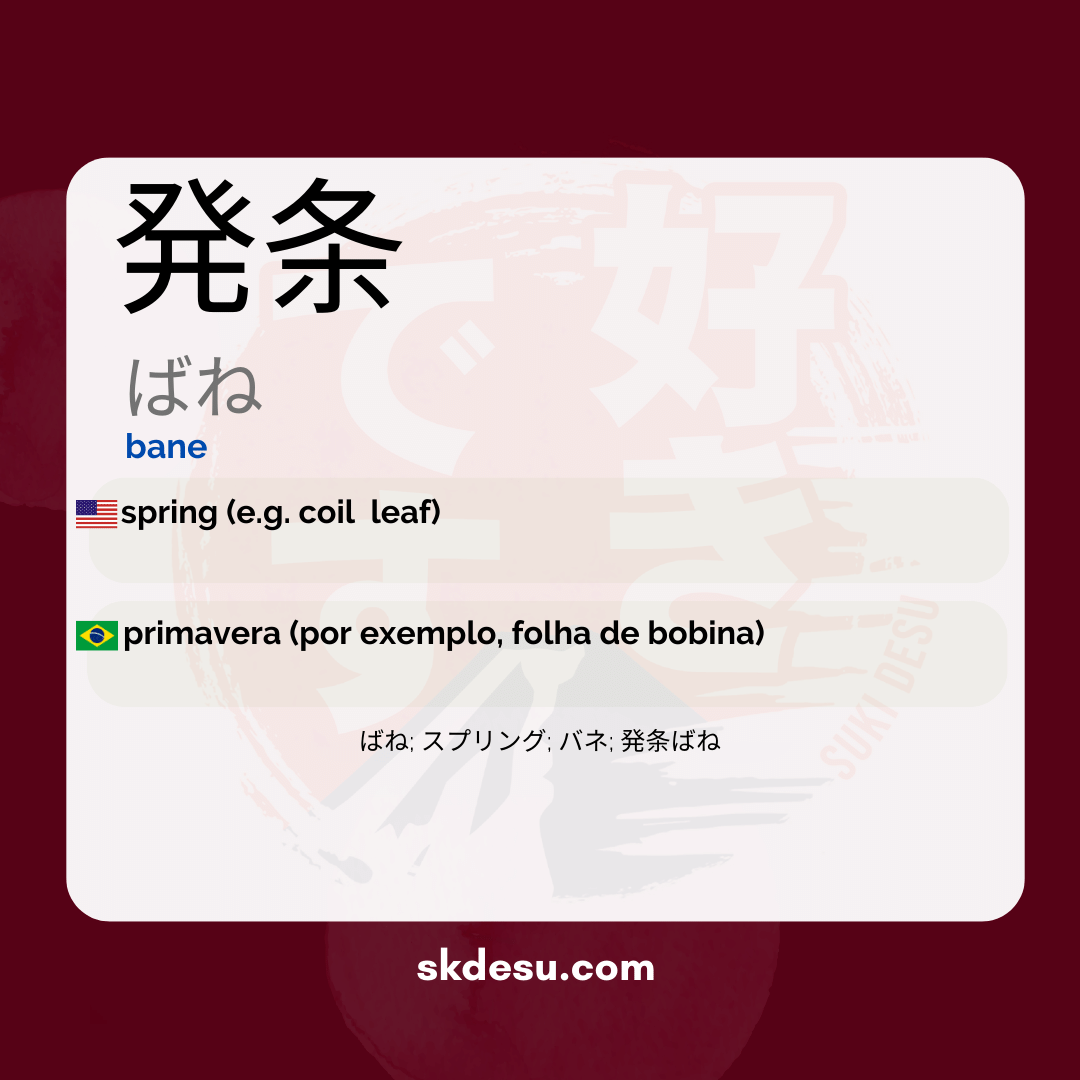Translation and Meaning of: 発条 - bane
Origin and Etymology
The word 「発条」 (bane) is composed of two Chinese characters (kanji), 「発」 (hatsu) and 「条」 (jou). 「発」 carries the meaning of "release" or "emission," while 「条」 suggests something linear or a strip. Despite this construction, the word is pronounced as "bane" and primarily refers to a specific object: the spring. It is not uncommon for Japanese words to have readings that diverge from the literal meaning of their characters, and 「発条」 is a classic example of this. When studying this word, one can perceive the combination of the concept of propelling and aligning, essentially a description of the basic function of a spring.
Definition and Modern Use
In the modern context, 「発条」 refers to any type of spring in general, whether it is a compression, tension, or torsion spring. With the advancement of technology, springs have become essential components in a variety of devices, from precision clocks to heavy vehicles. In everyday life, we usually refer to springs simply as 「ばね」 (bane) without resorting to kanji, except in more technical or literary contexts. This distinction is part of the charm and complexity of the Japanese language, allowing for both a poetic and technical touch, depending on how the word is used.
Variations and Applications
Besides its more technical use, the term 「ばね」 is also used metaphorically in the Japanese language. It can refer to someone who has a "spring" inside them, indicating a person full of energy or ready to react quickly to a situation. In another context, the expression 「ばねが利いている」 can be used to describe something that is well-adjusted or functioning perfectly, evoking the image of a mechanism where springs play an essential role.
History and Cultural Relevance
The history of springs dates back to ancient civilizations, but they gained significant importance during the Industrial Revolution. In Japan, with the flourishing of manufacturing and engineering in the 20th century, precision in the development of springs was an essential aspect for the advancement of various industries. Tools and devices manufactured in Japan are known for their quality, often relying on internal components such as springs to provide that excellence. The word 「発条」, therefore, transcends its technical meaning and carries with it the spirit of innovation and precision that permeates Japanese manufacturing culture.
Vocabulary
Expand your vocabulary with related words:
Synonyms and similar words
- ばね (bane) - mola
- スプリング (supuringu) - mola (from English "spring")
- バネ (bane) - mola (transliterated from English "spring")
- 発条ばね (hatsujo banei) - coil spring
Related words
Romaji: bane
Kana: ばね
Type: Noun
L: jlpt-n2, jlpt-n1
Translation / Meaning: Spring (for example, coil sheet)
Meaning in English: spring (e.g. coil leaf)
Definition: A source of energy with a twisted axis to move a part of a machine, etc.
Quick Access
- Vocabulary
- Writing
- Sentences
How to Write in Japanese - (発条) bane
See below a step-by-step guide on how to write the word by hand in Japanese. (発条) bane:
Example Sentences - (発条) bane
See below some example sentences:
Nenhum resultado encontrado.
Other Words of this Type: Noun
See other words from our dictionary that are also: Noun

